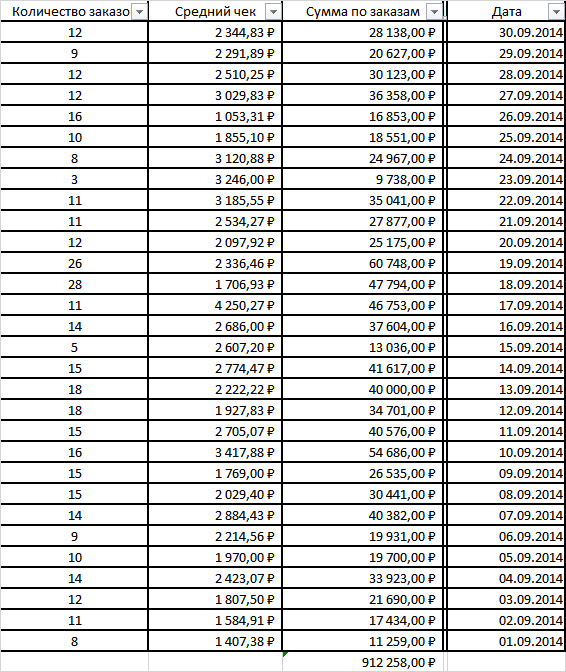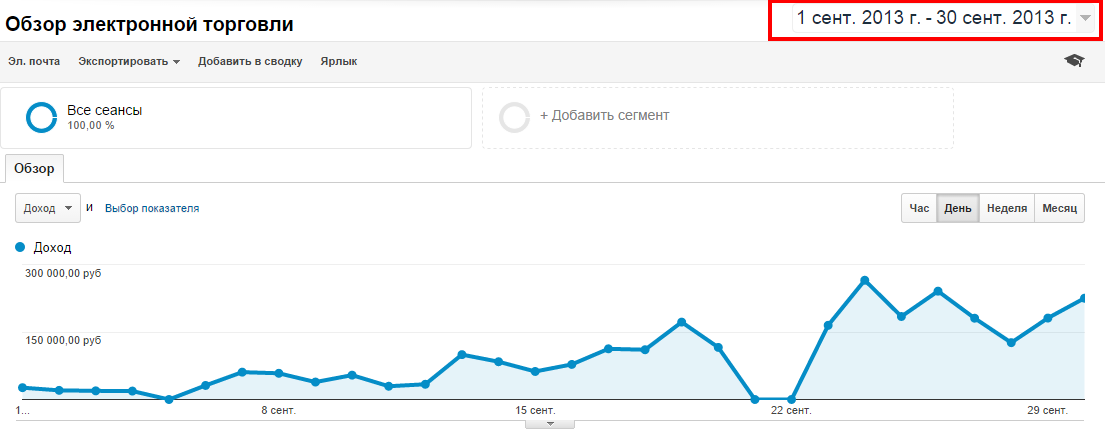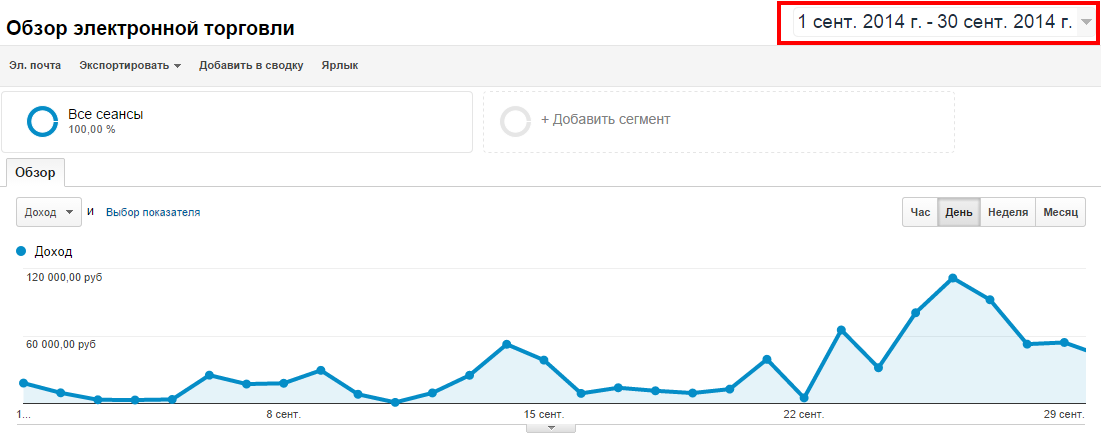What can mobile applications give to an online store and a retail company in general? Figures in the studio ...!

When developing applications for retail companies, we constantly encounter objections from customers (or why “we don’t need this”) and we have already accumulated some knowledge base, which I want to share. I’ll try to build the article with answers to the most popular objections - I got 9 points on which I’ll give answers below the article (with some numbers), showing that you can not underestimate the possibilities of applications for the retail business. I will not consciously give figures in the article how many smartphones are sold in Russia, etc. - This trend is obvious and it is probably interesting to discuss what kind of return a company should expect. I emphasize - we will only talk about the retail segment of physical goods (clothing, shoes, consumer electronics, children's goods, food, etc.). So:
1. We have a mobile site and this is enough to work with a mobile audience!
No doubt - this is a very strong argument, so I took it to the very beginning. Usually they argue in this way: a consumer visits a site from a mobile phone and can place an order, view the assortment, familiarize himself with news-promotions, etc. in a fairly comfortable mobile browser interface. It's true. The mobile site solves the main task - to quickly obtain information through an adapted interface (here it’s more about smartphones, because on tablets and a regular site opens well). But the site differs from the mobile application significantly. To begin with, each online store has its own loyal customers. Even if the store is small, people appear who like the service and range, and they make purchases regularly. And it is for such customers that mobile applications can be very convenient. I emphasize may be, but should not be. Although I am an adherent of applications, I by no means believe that the application is able to replace the site (regular and mobile) in the near future (at least in Russia).
Recently I saw an interesting thesis that soon the screen of a mobile phone will become the most expensive place on Earth, because many companies try to get there in the form of a mobile application and, more importantly, not just get there, but gain a foothold (stay). On average, according to research, a person puts about 26 mobile applications (around the world), although, of course, not everyone uses them equally often. By the way, in 2010 (according to analytics from www.statista.com ) about 40 million people actively used mobile applications, in 2014 this figure grew to 214 million worldwide! And while there is no rate of decline in this indicator. Being engaged in applications for online stores, we are observing this trend in Russia as well - a year ago our service was less in demand.
Returning to the question - having fixed itself on the screen of a mobile phone through the application, the company receives a very serious opportunity to interact with the consumer - through push notifications. I understand that many will argue that push is akin to sms / email spam. Yes, this is true, but perhaps there is one significant difference - push is simply enough to disable if the company begins to abuse it. In addition, the mobile site often lags behind the functionality of the main site of the company, acting as an interactive business card. And mobile applications, which may also be less functional, can act either as a replacement for it, or, better, as an addition. Yes, so that the online store gets the most out of it, optimally if both the mobile site and the application work. Moreover, the experience of one of our clients showed that when a simple mobile site was launched, on which there was an advertisement for a mobile application, the number of installations of the latter increased by about 20% (I assume that the application’s advertisement became more visible on the phone screen). In my reasoning, there is one “but” - there is the cost of both creating applications and supporting them. And the resulting return from the application for a very small online store may simply not pay back the costs.
2. We want to make a responsive website and it will display well on all mobile devices.
It should be noted that an adaptive site is more difficult to create and then maintain (and this is more important) than just a mobile version of the site, although from the point of view of the end customer there is not much difference. At the same time, the arguments above remain valid - it is better to have both an adaptive site (in fact, these are several site options for different devices) and an application to achieve maximum results.
3. Through mobile applications no one buys and will not buy.
This is not quite a valid objection. The time has already passed when mobile applications of online stores were considered as a kind of curiosity. Now it is a stable channel for receiving orders, although, of course, so far behind the regular website. I don’t presume to predict how soon sales through mobile applications will “catch up” with the site, but given the consistently high sales of smartphones in Russia, this will definitely have a positive effect. Our observations, at least, prove this.
I’ll try to show by numbers that applications can give orders and a lot. But first, I note that in order to receive orders from applications, some time must pass (our experience: 3-5 months) during which an audience (installation) will accumulate. This is a significant difference between the application and the site - the quantity should go into quality, and for applications this thesis is true anywhere else. Companies must make efforts to promote applications by posting information on the site, on social networks, etc. (all channels are free, believe me - their potential is more than sufficient). The more installations, the more orders. Moreover, for a little less than 2 years of application work, some of our clients have not yet observed their stagnation (saturation) on orders - there is constant, calm growth.
Below is an example of daily orders in September 2014 for the fashion segment (retail chain, company name is not given hereinafter). Applications are promoted only on their website in the form of banners and footer links. By the way, I observe that in medium and large retail chains the department of online commerce is separated from the management structure of retail stores, and therefore advertising the availability of applications in the stores themselves is not always carried out simply and quickly, although the return will be enormous. This customer has a low average bill. The company receives about 350 new application installations on all platforms per day, and the number of active daily users is about 1200 (active are new + old, in fact, those who launched the application).

I want to note that sometimes we observe some errors in Google Analytics for mobile regarding the E-Commerce block due to regular improvements in the Google Analytics SDK and if we do not update the SDK version when updating the client application, the system starts to distort data. Therefore, in the article I give figures on orders from our database (all the data that we store at our place is completely anonymous) - this is 100% accuracy. The result above was achieved by 13,883 application launches on all platforms (new users and returnees). A total of 390 orders were made. You can calculate the conversion (= 2.8%). Further it (conversion) can be improved by optimizing the interface, improving the content, etc. (including push notifications). By the way, push notifications, according to our customers, give a short-term increase in turnover up to three times (for 2-3 days).
Of course, the average bill influences the final result quite strongly. An example of another client in the same segment (fashion) is a clear confirmation of this. Although in this example the number of orders is slightly larger, which ultimately leads to a doubling of the amount of orders received from mobile applications. Yes, I missed it - the iPhone / iPad / Android versions work in both examples.

For this company, 690 orders were formed by 18,286 application launches on all platforms in September 2014, which gives a conversion of 3.77%. I emphasize that 18,286 is not the total number of installations, but the number of launches over the period on all platforms. Again - this client promotes mobile applications exclusively on its website.
The reader may note that these are companies that have chain stores and, therefore, their brand recognition is high and people are willing to put applications. I will try to prove the opposite. Online store for goods for children and adolescents, including clothing shoes, etc. There are no retail stores, site traffic is somewhere in the region of 9,000 visitors per day. Applications work exactly one year, iPhone / iPad / Android versions. I must say right away - the numbers are honest, no tricks. Why is it so good with volume orders? The year of operation of the applications gives a tangible mass of installations, which is then converted into orders. Moreover, which is attractive - the client spent 0 rubles (zero) this year on promotion - only information on the site, on social networks, in mailing lists, etc.

Again, it can be noted that the above results are for business segments that, let's say, are attractive to the user of mobile applications (clothes, shoes, goods for children, etc.). And what about other segments? I won’t bring food home, so I won’t be pleasantly surprised by the numbers, I note that there the results are even better than those given above, but for the segment of household appliances and electronics - see below.

In this article, I deliberately do not go into detailed analytics on various indicators of the use of applications for online stores. I leave this on the topic of a new article, where it will be possible to more thoughtfully deal with different coefficients. And there are a lot of them for retail mobile applications, especially in comparison with the performance of the site.
4. The functionality of mobile applications is very far behind the site and there will be no sense in them.
Good argument. Indeed, applications “catch up” on the site functionality. From our experience, most companies launch first versions that are functional enough to work first. Then, as the audience gains and orders from the applications arrive, lists of improvements appear that actually bring the applications to the standards accepted for a good trading site (reviews, ratings, feedback, etc.). Here the question is different - rarely when the customer is 100% sure of the result for his business and by launching a simpler solution, he reduces his risks (financial, temporary)
5. We have a very specific audience that will not install mobile applications.
I have never met such people (of course, this does not mean that there are none). As I mentioned, a retail company can be very small and the return on applications may not cover the cost of maintenance, but it’s hard for me to imagine the b2c segment where the audience is so specific that it categorically refuses to use mobile applications. After all, in the end, these are retail sales - and, therefore, buyers are ordinary people who are not alien to new technologies.
6. Applications are not enough to make, they still need to be promoted, and there are no budgets for this.
Allow according to Stanislavsky - "I do not believe!". Each company already has working mechanisms for finding new and retaining old (loyal) customers. These are the mechanisms that need to be added with a few phrases about the fact that applications are now available. Someone will say that this is too general an answer - but it is true! Is there a website on the Internet? Post information on it. There is a large group in social networks - mentions there will give installation. Is there one store with an entrance on the street? - it is full of places where you can place the simplest application advertising (printing costs are a penny).
7. We have a very small business and there is no chance to “cling” to the client’s phone.
This argument is perhaps the most difficult to dispute among others. I will say this - any store can make a mobile application for itself and it will have settings, because any business has its own loyal customers who make regular purchases. But here it is worth noting that the creation and support of applications costs certain funds and investments (even minimal one-time ones) will pay off for quite some time for a small online store. I don’t presume to evaluate how large the project should be, so that the founding fathers think about the applications, probably you can evaluate the allocated budgets for advertising.
8. Mobile applications will work well only for those online stores that have delivery.
Not at all. We have customers - network companies that do not have delivery to the address. For them, applications are an additional channel of communication with consumers, plus a wishlist works, where a person can add the product they like and continue to show it in the store to save their time and, more valuable for business, staff time (and this, in turn, can allow not to hire extra employees).
9. The turnover will simply “flow” from the site to the applications and in total we won’t receive more income, but the costs will increase.
Very often we encounter such an objection, especially among experienced people in e-commerce. For a long time I tried to find numbers that could clearly confirm the opposite, but could not. The fact is that you need to take a period when the client did not have mobile applications, then we made them and compare them. But there are still many other factors affecting the turnover. But let's try it. Take the turnover of one of the clients for September 2013 from the site (applications have not yet worked). And September 2014, when the applications are already working and pretty good. And look at the indicator - orders in money from the company's website. Compare these two periods.
Orders from the site in September 2013:

Orders from the site in September 2014:

Comparing, as you can see, is quite difficult. The numbers differ significantly. I understand, someone can say that the channel of sales via the Internet has simply grown. Therefore, I mentioned earlier that giving a completely reliable comparison is problematic, because ongoing development. Well, the next schedule is orders only through applications. Obviously, applications as a source of income are definitely inferior to the site, there is nothing surprising in this. But if we say that they give an additional 15-20% to orders from the site - well, that's great! And certainly, they do not drag the entire turnover from one channel to another.
Orders from mobile applications (iPhone / iPad / Android) in September 2014:

Of course, some customers stopped ordering through the site and switched to mobile applications. But they continue to make orders, see the company logo (icon) on their phone (tablet) regularly (a good brand promotion channel, it is worth noting) and the company can actively interact with them through push notifications. You can look at the percentage of new and returning site users in September 2013 (new 45.21%, returning 54.79%) and compare with September 2014 (new 40.98%, returning 59.02%). It can be seen that the numbers, although they differ, are not very strong, so it’s impossible to say that all loyal users “flowed” into applications. Separately, I note that for mobile applications a very large percentage of returning users is characteristic - up to 95%,
In conclusion, I note that orders from applications are an important, but not the only method of utilizing the capabilities of mobile devices. We are witnessing an active growth of interest in iBeacon technology and personal mechanisms of interaction with the consumer (scenarios of using this technology can be found in our previous article on Habré). If the reader is interested in the history of our company - how we looked for an investor and launched a mobile application development company in 2013 from scratch, I refer to the publication on this resource by this link .
ps The life of our company can be followed in a more “lively” mode via twitter or through my facebook account .
